Alarm interventions for nocturnal enuresis in children
- PMID: 32364251
- PMCID: PMC7197139
- DOI: 10.1002/14651858.CD002911.pub3
Alarm interventions for nocturnal enuresis in children
Abstract
Background: Enuresis (bedwetting) affects up to 20% of five-year-olds and can have considerable social, emotional and psychological effects. Treatments include alarms (activated by urination), behavioural interventions and drugs.
Objectives: To assess the effects of enuresis alarms for treating enuresis in children.
Search methods: We searched the Cochrane Incontinence Specialised Register, which contains trials identified from the Cochrane Central Register of Controlled Trials (CENTRAL), MEDLINE, MEDLINE In-Process, MEDLINE Epub Ahead of Print, ClinicalTrials.gov, WHO ICTRP, and handsearching of journals and conference proceedings (searched 25 June 2018), and reference lists of relevant articles.
Selection criteria: We included randomised or quasi-randomised trials of enuresis alarms or alarms combined with another intervention for treating nocturnal enuresis in children between 5 and 16 years old.
Data collection and analysis: Two review authors independently assessed risk of bias and extracted data.
Main results: We included 74 trials (5983 children). At treatment completion, alarms may reduce the number of wet nights a week compared to control or no treatment (mean difference (MD) -2.68, 95% confidence interval (CI) -4.59 to -0.78; 4 trials, 127 children; low-quality evidence). Low-quality evidence suggests more children may achieve complete response (14 consecutive dry nights) with alarms compared to control or no treatment (RR 7.23, 95% CI 1.40 to 37.33; 18 trials, 827 children) and that more children may remain dry post-treatment (RR 9.67, 95% CI 4.74 to 19.76; 10 trials, 366 children; low-quality evidence). At treatment completion, we are uncertain whether there is any difference between alarms and placebo drugs in the number of wet nights a week (MD -0.96, 95% CI -2.32 to 0.41; 1 trial, 47 children; very low-quality evidence). Alarms may result in more children achieving complete response than with placebo drugs (RR 1.59, 95% CI 1.16 to 2.17; 2 trials, 181 children; low-quality evidence). No trials comparing alarms to placebo reported the number of children remaining dry post-treatment. Compared with control alarms, code-word alarms probably slightly increase the number of children achieving complete response at treatment completion (RR 1.11, 95% CI 0.97 to 1.27; 1 trial, 353 children; moderate-quality evidence) but there is probably little to no difference in the number of children remaining dry post-treatment (RR 0.91, 95% CI 0.79 to 1.05; moderate-quality evidence). Very low-quality evidence means we are uncertain if there are any differences in effectiveness between the other different types of alarm. At treatment completion, alarms may reduce the number of wet nights a week compared with behavioural interventions (waking, bladder training, dry-bed training, and star chart plus rewards) (MD -0.81, 95% CI -2.01 to 0.38; low-quality evidence) and may increase the number of children achieving complete response (RR 1.77, 95% CI 0.98 to 3.19; low-quality evidence) and may slightly increase the number of children remaining dry post-treatment (RR 1.39, 95% CI 0.81 to 2.41; low-quality evidence). The evidence relating to alarms compared with desmopressin in the number of wet nights a week (MD -0.64, 95% CI -1.77 to 0.49; 4 trials, 285 children) and the number of children achieving complete response at treatment completion (RR 1.12, 95% CI 0.93 to 1.36; 12 trials, 1168 children) is low-quality, spanning possible harms and possible benefits. Alarms probably slightly increase the number of children remaining dry post-treatment compared with desmopressin (RR 1.30, 95% CI 0.92 to 1.84; 5 trials, 565 children; moderate-quality evidence). At treatment completion, we are uncertain if there is any difference between alarms and tricyclics in the number of wet nights a week, the number of children achieving complete response or the number of children remaining dry post-treatment, because the quality of evidence is very low. Due to very low-quality evidence we are uncertain about any differences in effectiveness between alarms and cognitive behavioural therapy, psychotherapy, hypnotherapy and restricted diet. Alarm plus desmopressin may reduce the number of wet nights a week compared with desmopressin monotherapy (MD -0.88, 95% CI -0.38 to -1.38; 2 trials, 156 children; low-quality evidence). Alarm plus desmopressin may increase the number of children achieving complete response (RR 1.32, 95% CI 1.08 to 1.62; 5 trials, 359 children; low-quality evidence) and the number of children remaining dry post-treatment (RR 2.33, 95% CI 1.26 to 4.29; 2 trials, 161 children; low-quality evidence) compared with desmopressin alone. Alarm plus dry-bed training may increase the number of children achieving a complete response compared to dry-bed training alone (RR 3.79, 95% CI 1.85 to 7.77; 1 trial, 80 children; low-quality evidence). It is unclear if there is any difference in the number of children remaining dry post-treatment because of the wide confidence interval (RR 0.56, 95% CI 0.15 to 2.12; low-quality evidence). Due to very low-quality evidence, we are uncertain about any differences in effectiveness between alarm plus bladder training versus bladder training alone. Of the 74 included trials, 17 reported one or more adverse events, nine reported no adverse events and 48 did not mention adverse events. Adverse events attributed to alarms included failure to wake the child, ringing without urination, waking others, causing discomfort, frightening the child and being too difficult to use. Adverse events of comparator interventions included nose bleeds, headaches and abdominal pain. There is probably a slight increase in adverse events between code-word alarm and standard alarm (RR 1.34, 95% CI 0.75 to 2.38; moderate-quality evidence), although we are uncertain because of the wide confidence interval. Alarms probably reduce the number of children experiencing adverse events compared with desmopressin (RR 0.38, 95% CI 0.20 to 0.71; 5 trials, 565 children; moderate-quality evidence). Very low-quality evidence means we cannot be certain whether the adverse event rate for alarms is lower than for other treatments.
Authors' conclusions: Alarm therapy may be more effective than no treatment in reducing enuresis in children. We are uncertain if alarm therapy is more effective than desmopressin but there is probably a lower risk of adverse events with alarms than with desmopressin. Despite the large number of trials included in this review, further adequately-powered trials with robust randomisation are still needed to determine the full effect of alarm therapy.
Trial registration: ClinicalTrials.gov NCT00209261 NCT00230594 NCT00240812 NCT00270621 NCT00404638 NCT01575678.
Copyright © 2020 The Cochrane Collaboration. Published by John Wiley & Sons, Ltd.
Conflict of interest statement
PC: is one of the inventors of an enuresis alarm. The Children's Hospital at Westmead and the University of Sydney jointly owned the patent to that alarm but the patent has now lapsed. Commercialisation is possible but not assured. The Children's Hospital at Westmead has also received a research grant and payment for development of educational material on enuresis by a pharmaceutical company. MC: none known FS: none known DH: none known PS: none known
PC and PS are authors of one of the studies included in the review (Caldwell 2015), but did not contribute to the data extraction, data analysis and discussions about that study. This was completed by FS and DH.
Figures
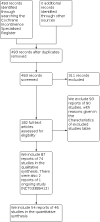
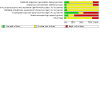
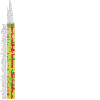

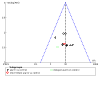

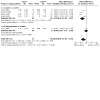

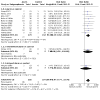
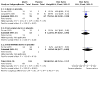
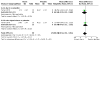
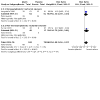
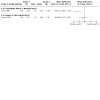
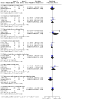
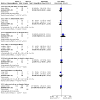
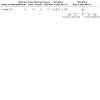


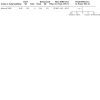

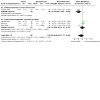
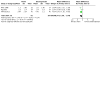

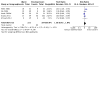
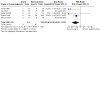
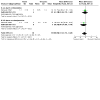

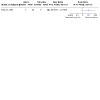
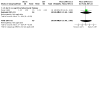
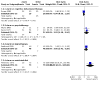
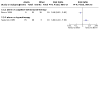
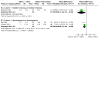

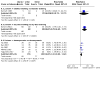

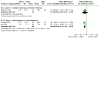
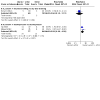
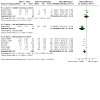
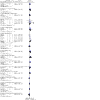
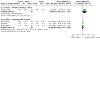
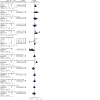
Update of
-
Alarm interventions for nocturnal enuresis in children.Cochrane Database Syst Rev. 2005 Apr 18;(2):CD002911. doi: 10.1002/14651858.CD002911.pub2. Cochrane Database Syst Rev. 2005. Update in: Cochrane Database Syst Rev. 2020 May 4;5:CD002911. doi: 10.1002/14651858.CD002911.pub3. PMID: 15846643 Updated.
References
References to studies included in this review
Ahmed 2013 {published data only}
Azrin 1974 {published data only}
-
- Azrin NH, Sneed TJ, Foxx RM. Dry-bed training: rapid elimination of childhood enuresis. Behaviour Research and Therapy 1974;12(3):147-56. - PubMed
Azrin 1978 {published data only}
-
- Azrin NH, Thienes PM. Rapid elimination of enuresis by intensive learning without a conditioning apparatus. Behaviour Therapy 1978;9:342-54.
Bak 2007 {published data only}
-
- Bak M, Serdaroglu E, Bicilioglu Y. Comparing desmopressin, alarm and combined treatments in nocturnal enuretic children (Abstract number 531 (P)). Pediatric Nephrology 2007;22(9):1542.
Baker 1969 {published data only}
-
- Baker BL. Symptom treatment and symptom substitution in enuresis. Journal of Abnormal Psychology 1969;74(1):42-9. - PubMed
Bennett 1985 {published data only}
-
- Bennett GA, Walkden VJ, Curtis RH, Burns LE, Rees J, Gosling JA, et al. Pad-and-buzzer training, dry-bed training, and stop-start training in the treatment of primary nocturnal enuresis. Behavioural Psychotherapist 1985;13:309-19.
Bollard 1981a {published data only}
-
- Bollard J, Nettelbeck T. A comparison of dry-bed training and standard urine-alarm conditioning treatment of childhood bedwetting. Behaviour Research and Therapy 1981;19(3):215-26. - PubMed
-
- Bollard J. A 2-year follow-up of bedwetters treated by dry-bed training and standard conditioning. Behaviour Research and Therapy 1982;20(6):571-80. - PubMed
Bollard 1981b {published data only}
-
- Bollard J, Nettelbeck T. A comparison of dry-bed training and standard urine-alarm conditioning treatment of childhood bedwetting. Behaviour Research and Therapy 1981;19(3):215-26. - PubMed
-
- Bollard J. A 2-year follow-up of bedwetters treated by dry-bed training and standard conditioning. Behaviour Research and Therapy 1982;20(6):571-80. - PubMed
Bollard 1982a {published data only}
-
- Bollard J, Nettelbeck T. A component analysis of dry-bed training for treatment for bedwetting. Behaviour Research and Therapy 1982;20(4):383-90. - PubMed
Bradbury 1995 {published data only}
-
- Bradbury M. Combination therapy for nocturnal enuresis with desmopressin and an alarm device. Scandinavian Journal of Urology and Nephrology. Supplementum 1997;183:61-3. [sr-incont5212] - PubMed
-
- Bradbury MG, Meadow SR. Combined treatment with enuresis alarm and desmopressin for nocturnal enuresis. Acta Paediatrica 1995;84(9):1014-8. - PubMed
Bryant 2003 {published data only}
-
- Bryant C, Fairbrother G. Baseline results: randomised trial of bladder training vs enuresis alarm vs bladder training plus enuresis alarm among children with nocturnal enuresis (Abstract 12.09 PP). In: Joint meeting of the International Children's Continence Society (ICCS) and the Asia-Pacific Association of Pediatric Urology (APAPU), 2002 Dec 10-13, Hong Kong. 2002:80.
-
- Bryant C, Fairbrother G. Randomised trial of bladder training vs enuresis alarm vs combined interventions in the management of nocturnal enuresis in children (Abstract). Conference unknown 2003. [SR-INCONT34172]
Butler 1988 {published data only}
-
- Butler RJ, Brewin CR, Forsythe WI. A comparison of two approaches to the treatment of nocturnal enuresis and the prediction of effectiveness using pre-treatment variables. Journal of Child Psychology and Psychiatry, and Allied Disciplines 1988;29(4):501-9. - PubMed
Butler 1990a {published data only}
-
- Butler RJ, Forsythe WI, Robertson J. The body-worn alarm in the treatment of childhood enuresis. British Journal of Clinical Practice 1990;44(6):237-41. - PubMed
Butler 1990b {published data only}
-
- Butler RJ, Forsythe WI, Robertson J. The body-worn alarm in the treatment of childhood enuresis. British Journal of Clinical Practice 1990;44(6):237-41. - PubMed
Caceres 1982 {published data only}
-
- Caceres J. Comparative efficacy between two methods for the treatment of enuresis. Revista de Psicologia General y Aplicada 1980;35(4):597-616.
-
- Caceres J. Enuresis: Cortical control or social reinforcement? Behaviour Therapist 1982;5(2):65-7.
-
- Caceres J. Enuresis: Cortical control or social reinforcement? Revista de Psicologia General y Aplicada 1979;34(161):1067.
Caldwell 2015 {published data only}
-
- Caldwell P. The Nocturnal Enuresis Alarm Therapy (NEAT) study. anzctr.org.au/ACTRN12609000070235.aspx (first received 11 December 2008). [ACTRN12609000070235]
-
- Caldwell PH, Sureshkumar P, Kerr M, Hamilton S, Craig JC. The NEAT (Nocturnal Enuresis Alarm Therapy) study: an RCT of a novel alarm that enhances waking (Abstract). In: Joint Congress of the International Children's Continence Society (ICCS), Education and Resources for Improving Childhood Continence (ERIC) and the British Association of Paediatric Urology (BAPU), 2012 Oct 12-14, London. 2012. [sr-incont63865]
-
- Caldwell PH, Sureshkumar P, Kerr M, Hamilton S, Craig JC. The NEAT (Nocturnal Enuresis Alarm Therapy) study: a randomized controlled trial of a novel alarm that enhances waking (Abstract number O4). Journal of Paediatrics and Child Health 2012;48(Suppl 2):1-2. [sr-incont63864]
-
- Caldwell PH, Sureshkumar P, Kerr MI, Hamilton S, Teixeira-Pinto A, Macaskill P, et al. A randomised controlled trial of a code-word enuresis alarm. Archives of Disease in Childhood 2015;101(4):326-31. - PubMed
Danquah 1975 {published data only}
-
- Danquah SA. Comparative treatment of nocturnal enuresis among Ghanaian school children. Psychopathologie Africaine 1975;11(3):363-73.
Elinder 1985 {published data only}
-
- Elinder G, Soback S. Effect of Uristop on primary nocturnal enuresis. A prospective randomized double-blind study. Acta Paediatrica Scandinavica 1985;74(4):574-8. - PubMed
Evans 2011 {published data only}
-
- Evans J, Lottmann H. "Desmopressin response in the treatment of primary nocturnal enuresis in the United Kingdom" DRIP UK: an open-label, randomised comparative study of oral desmopressin versus enuresis alarm (Abstract number 225). In: 37th Annual Meeting of the International Continence Society (ICS), 2007 August 20-24, Rotterdam, the Netherlands. 2007.
-
- Evans J, Malmsten B, Maddocks A, Popli HS, Lottmann H, UK study group. Randomized comparison of long-term desmopressin and alarm treatment for bedwetting. Journal of Pediatric Urology 2011;7(1):21-9. - PubMed
-
- Evans J [personal communication]. RCT of alarm vs desmopressin. Email to: C Glazener 4 June 2004.
Fagundes 2017 {published data only}
-
- Fagundes SN, Lebl AS, Azevedo SL, Sousa E Silva GJ, Silvares EF, Koch VH. Monosymptomatic nocturnal enuresis in pediatric patients: multidisciplinary assessment and effects of therapeutic intervention. Pediatric Nephrology (Berlin, Germany) 2017;32(5):843-51. [sr-incont74194] - PubMed
Faraj 1999 {published data only}
-
- Faraj G, Cochat P, Cavailles ML, Chevallier C. Treatment of isolated nocturnal enuresis: alarm or desmopressin? [Traitement de l'enuresie nocturne isolee: alarme sonore ou desmopressine?]. Archives de Pediatrie 1999;6(3):271-4. - PubMed
Fielding 1980 {published data only}
-
- Fielding D. The response of day and night wetting children and children who wet only at night to retention control training and the enuresis alarm. Behaviour Research and Therapy 1980;18(4):305-17. - PubMed
Finley 1973 {published data only}
-
- Finley WW, Besserman RL, Bennett LF, Clapp RK, Finley PM. The effect of continuous, intermittent, and "placebo" reinforcement on the effectiveness of the conditioning treatment for enuresis nocturna. Behaviour Research and Therapy 1973;11(3):289-97. - PubMed
Finley 1977 {published data only}
-
- Finley WW, Wansley RA. Auditory intensity as a variable in the conditioning treatment of enuresis nocturna. Behaviour Research and Therapy 1977;15(2):181-5. - PubMed
Fournier 1987 {published data only}
-
- Fournier JP, Garfinkel BD, Bond A, Beauchesne H, Shapiro SK. Pharmacological and behavioral management of enuresis. Journal of the American Academy of Child and Adolescent Psychiatry 1987;26(6):849-53. - PubMed
Geffken 1986a {published data only}
-
- Geffken G, Johnson SB, Walker D. Behavioral interventions for childhood nocturnal enuresis: the differential effect of bladder capacity on treatment progress and outcome. Health Psychology 1986;5(3):261-72. - PubMed
Geffken 1986b {published data only}
-
- Geffken G, Johnson SB, Walker D. Behavioral interventions for childhood nocturnal enuresis: the differential effect of bladder capacity on treatment progress and outcome. Health Psychology 1986;5(3):261-72. - PubMed
Gibb 2004 {published data only}
-
- Gibb S, Nolan T, South M, Noad L, Bates G, Vidmar S. Evidence against a synergistic effect of desmopressin with conditioning in the treatment of nocturnal enuresis. Journal of Pediatrics 2004;144(3):351-7. - PubMed
Hojsgaard 1979 {published data only}
-
- Højsgaard A, Genster H. Effect of Uristop in children with enuresis. A prospective randomized clinical trial [Effekten af uristop hos born med enuresis. En prospektiv randomiseret klinisk undersogelse]. Ugeskrift for Laeger 1979;141(10):647-8. [sr-incont1576] - PubMed
Hoseinzadeh 1997 {published data only}
-
- Hoseinzadeh E, Jalili B, Alhanie F. Comparison of drug therapy and conditioning the treatment of enuresis. Andeesheh Va Raftar 1997;3(2):79-84. [sr-incont40215]
Houts 1986 {published data only}
-
- Houts AC, Peterson JK, Whelan JP. Prevention of relapse in full-spectrum home training for primary enuresis: A components analysis. Behaviour Therapy 1986;17:462-9.
Jehu 1977 {published data only}
-
- Jehu D, Morgan RT, Turner RK, Jones A. A controlled trial of the treatment of nocturnal enuresis in residential homes for children. Behaviour Research and Therapy 1977;15(1):1-16. - PubMed
Kennedy 1968 {published data only}
-
- Kennedy WA, Sloop EW. Methedrine as an adjunct to conditioning treatment of nocturnal enuresis in normal and institutionalized retarded subjects. Psychological Reports 1968;22:997-1000. - PubMed
Kolvin 1972 {published data only}
-
- Kolvin I, Taunch J, Currah J, Garside RF, Nolan J, Shaw WB. Enuresis: a descriptive analysis and a controlled trial. Developmental Medicine and Child Neurology 1972;14(6):715-26. [sr-incont1607] - PubMed
Kwak 2010# {published data only}
-
- Kwak KW, Lee YS, Park KH, Baek M. Efficacy of desmopressin and enuresis alarm as first and second line treatment for primary monosymptomatic nocturnal enuresis: prospective randomized crossover study. Journal of Urology 2010;184(6):2521-6. - PubMed
Leebeek 2001 {published data only}
-
- Leebeek-Groenewegen AN, Blom J, Sukhai R, Van der Heijden B. Efficacy of desmopressin combined with alarm therapy for monosymptomatic nocturnal enuresis. Journal of Urology 2001;166(6):2456-8. - PubMed
Longstaffe 2000 {published data only}
-
- Longstaffe S, Moffatt ME, Whalen JC. Behavioral and self-concept changes after six months of enuresis treatment: a randomized, controlled trial. Pediatrics 2000;105(4 Pt 2):935-40. [sr-incont11928] - PubMed
Lovibond 1964a {published data only}
-
- Lovibond SH. Field experiment I: Experimental comparison of twin signal, Crosby and Mowrer instruments. In: Conditioning and Enuresis. New York: MacMillan (Pergamon Press), 1964:94-101.
Lovibond 1964b {published data only}
-
- Lovibond SH. Field experiments on the reduction of the relapse rate. In: Conditioning and Enuresis. New York: MacMillan (Pergamon Press), 1964:121-31.
Lovibond 1964c {published data only}
-
- Lovibond SH. Field experiments on the reduction of the relapse rate. In: Conditioning and Enuresis. New York: MacMillan (Pergamon Press), 1964:121-31.
Lynch 1984 {published data only}
-
- Lynch NT, Grunert BK, Vasudevan SV, Severson RA. Enuresis: comparison of two treatments. Archives of Physical Medicine and Rehabilitation 1984;65(2):98-100. - PubMed
Ma 2007 {published data only}
-
- Ma J, Zhang Y-W, Wu H, Jiang F, Jin X-M. A randomized controlled clinical trial for treatment of children with primary nocturnal enuresis. Zhonghua Er Ke za Zhi. Chinese Journal of Pediatrics 2007;45(3):167-71. [sr-incont23089] - PubMed
McKendry 1975 {published data only}
Moffatt 1987 {published data only}
-
- Moffatt ME, Kato C, Pless IB. Improvements in self-concept after treatment of nocturnal enuresis: randomized controlled trial. Journal of Pediatrics 1987;110(4):647-52. - PubMed
Motavalli 1994 {published data only}
-
- Motavalli N, Tuzun U, Tuna S, Yargic I, Aydogmus K. Comparison of the effectiveness of three different treatment modalities in enuresis nocturna. Noropsikiyatri Arsivi (Archives of Neuropsychiatry - Turkish) 1994;31(3):146-50. [EMBASE: 1995015454] [sr-incont7010]
Naitoh 2005 {published data only}
Nawaz 2002 {published data only}
-
- Nawaz S, Griffiths P, Tappin D. Parent-administered modified dry-bed training for childhood nocturnal enuresis: evidence for superiority over urine-alarm conditioning when delivery factors are controlled. Behavioral Interventions 2002;17(4):247-60. [EMBASE: 2002415343] [sr-incont16300]
Netley 1984 {published data only}
Ng 2005 {published data only}
-
- Ng CF-N, Wong SN, Hong Kong Childhood Enuresis Study Group. Comparing alarms, desmopressin, and combined treatment in Chinese enuretic children. Pediatric Nephrology 2005;20(2):163-9. - PubMed
Onol 2015 {published data only}
-
- Onol FF, Guzel R, Tahra A, Kaya C, Boylu U. Comparison of long-term efficacy of desmopressin lyophilisate and enuretic alarm for monosymptomatic enuresis and assessment of predictive factors for success: a randomized prospective trial. Journal of Urology 2015;193(2):655-61. - PubMed
-
- Tramma D, Dokousli V. Comparison of long-term efficacy of desmopressin lyophilisate and enuretic alarm for monosymptomatic nocturnal enuresis and assessment of predictive factors for success (Abstract). Pediatric Nephrology (Berlin, Germany) 2015;30(9):1594. [sr-incont70800]
Ozden 2008 {published data only}
-
- Ozden C, Ozdal OL, Aktas BK, Ozelci A, Altinova S, Memis A. The efficacy of the addition of short-term desmopressin to alarm therapy in the treatment of primary nocturnal enuresis. International Urology and Nephrology 2008;40(3):583-6. [sr-incont27895] - PubMed
Rodriguez 2001 {published data only}
-
- Rodriguez do Forno A, Ariceta Iraola G. Results of a therapeutic strategy against monosymptomatic nocturnal enuresis background. Anales Espanoles de Pediatria 2001;54(1):38-43. - PubMed
Ronen 1995 {published data only}
-
- Ronen T, Rahav G, Wozner Y. Self-control and enuresis. Journal of Cognitive Psychotherapy 1995;9:249-58. [EMBASE: 1996053557] [sr-incont6966]
-
- Ronen T, Wozner Y, Rahav G. Cognitive intervention in enuresis. Child & Family Behavior Therapy 1992;14(2):1-14. [sr-incont7998]
Sacks 1974 {published data only}
-
- Sacks S, De Leon G, Blackman S. Psychological changes associated with conditioning functional enuresis. Journal of Clinical Psychology 1974;30(3):271-6. - PubMed
Scholander 1968 {published data only}
-
- Scholander T. Treating enuresis nocturna by a combination of medicines and conditioning [Behandling av enuresis nocturna med betingning och medikamenter]. Lakartidningen 1968;65(46):4552-6. [sr-incont4565] [PMID: ] - PubMed
Seabrook 2005 {published data only}
Shakiba 2001 {published data only}
-
- Shakiba M, Golshan M. Management of nocturnal enuresis using alarm device. Journal of Shahid Sadoughi University of Medical Sciences and Health Services 2001;9(3):17-20. [sr-incont45792]
Sloop 1973 {published data only}
-
- Sloop EW, Kennedy WA. Institutionalized retarded nocturnal enuretics treated by a conditioning technique. American Journal of Mental Deficiency 1973;77(6):717-21. - PubMed
Sukhai 1989# {published data only}
-
- Sukhai RN, Mol J, Harris AS. Combined therapy of enuresis alarm and desmopressin in the treatment of nocturnal enuresis. European Journal of Pediatrics 1989;148(5):465-7. - PubMed
Taylor 1975 {published data only}
-
- Taylor PD, Turner RK. A clinical trial of continuous, intermittent and overlearning 'bell and pad' treatments for nocturnal enuresis. Behaviour Research and Therapy 1975;13(4):281-93. [sr-incont1587] [PMID: ] - PubMed
Titawee 2000 {published data only}
-
- Titawee K, Samorn A, Wajjanin R. Alarm conditioning and traditional method for enuresis treatment in Thai children: randomized controlled trial. Siriraj Hospital Gazette 2000;52(1):10-22.
-
- Titawee K. Pad and Bell Compared to Traditional Method for Enuresis Treatment in Thai Children: Randomized Controlled Trial [thesis]. Bangkok, Thailand: Chulalongkorn University, 1998.
Tobias 2001 {published data only}
-
- Tobias NE, McCain GC. A comparison of two enuresis alarms. Urologic Nursing 2001;21(5):349-53. - PubMed
Tuncel 2014 {published data only}
-
- Tuncel A, Balci M, Oguz U, Aslan Y, Bilgin O, Atan A. Comparison of efficacy of desmopressin fast-melting formulation and enuretic alarm-only in the treatment of nocturnal enuresis (Abstract number UP.343). Urology 2014;84(4 Suppl 1):S273. - PubMed
Turner 1970 {published data only}
-
- Turner RK, Young GC, Rachman S. Treatment of nocturnal enuresis by conditioning techniques. Behaviour Research and Therapy 1970;8(4):367-91. [sr-incont5762] - PubMed
Tuygun 2007 {published data only}
-
- Tuygun C, Eroglu M, Bakirtas H, Gucuk A, Zengin K, Imamoglu A. Is second-line enuretic alarm therapy after unsuccessful pharmacotherapy superior to first-line therapy in the treatment of monosymptomatic nocturnal enuresis? Urologia Internationalis 2007;78(3):260-3. - PubMed
Van Hoeck 2008 {published data only}
-
- Van Hoeck K, Bael A, Hirche H, Lax H, Van Gool J, Trouet D. Increasing functional bladder capacity in monosymptomatic nocturnal enuresis? A randomized controlled trial in 149 pre-pubertal children (Abstract number 545 (P)). Pediatric Nephrology 2007;22(9):1546.
-
- Van Hoeck KJ, Bael A, Lax H, Hirche H, Bernaerts K, Vandermaelen V, et al. Improving the cure rate of alarm treatment for monosymptomatic nocturnal enuresis by increasing bladder capacity--a randomized controlled trial in children [see comment]. Journal of Urology 2008;179(3):1122-6; discussion 1126-7. - PubMed
-
- Van Hoeck KJ, Bael A, Van Dessel E, Van Renthergem D, Bernaerts K, Vandermaelen V, et al. Do holding exercises or antimuscarinics increase maximum voided volume in monosymptomatic nocturnal enuresis? A randomized controlled trial in children. Journal of Urology 2007;178(5):2132-6. - PubMed
Van Londen 1993 {published data only}
-
- Van Londen A, Van Londen-Barentsen MW, Van Son MJ, Mulder GA. Arousal training for children suffering from nocturnal enuresis: a 2 1/2 year follow-up. Behaviour Research and Therapy 1993;31(6):613-5. [sr-incont8009] - PubMed
-
- Van Londen A, Van Londen-Barentsen MW, Van Son MJ, Mulder GA. Relapse rate and subsequent parental reaction after successful treatment of children suffering from nocturnal enuresis: a 2 1/2 year follow-up of bibliotherapy. Behaviour Research and Therapy 1995;33(3):309-11. [sr-incont4208] - PubMed
Vogt 2010 {published data only}
-
- Vogt M, Lehnert T, Till H, Rolle U. Evaluation of different modes of combined therapy in children with monosymptomatic nocturnal enuresis. BJU International 2010;105(10):1456-9. - PubMed
Wagner 1982 {published data only}
-
- Wagner W, Johnson SB, Walker D, Carter R, Wittner J. A controlled comparison of two treatments for nocturnal enuresis. Journal of Pediatrics 1982;101(2):302-7. - PubMed
Wagner 1985 {published data only}
-
- Wagner WG, Matthews R. The treatment of nocturnal enuresis: a controlled comparison of two models of urine alarm. Journal of Developmental and Behavioral Pediatrics 1985;6(1):22-6. [sr-incont6599] - PubMed
Werry 1965 {published data only}
-
- Werry JS, Cohrssen J. Enuresis - an etiologic and therapeutic study. Journal of Pediatrics 1965;67(3):423-31. - PubMed
Wille 1986 {published data only}
-
- Wille S. Primary nocturnal enuresis in children. Background and treatment. Scandinavian Journal of Urology and Nephrology. Supplementum 1994;156:1-48. [sr-incont4221] - PubMed
Wright 1974 {published data only}
-
- Wright L, Craig SC. A comparative study of amphetamine, ephedrine-atropine mixture, placebo and behavioral conditioning in the treatment of nocturnal enuresis. Journal - Oklahoma State Medical Association 1974;67(10):430-3. [sr-incont1602] - PubMed
Young 1972 {published data only}
-
- Young GC, Morgan RT. Overlearning in the conditioning treatment of enuresis: a long-term follow-up study. Behaviour Research and Therapy 1972;10(4):419-20. [sr-incont6635] - PubMed
-
- Young GC, Morgan RT. Overlearning in the conditioning treatment of enuresis. Behaviour Research and Therapy 1972;10(2):147-51. [sr-incont5761] - PubMed
References to studies excluded from this review
Akoglu 2006 {published data only}
-
- Akoglu E, Gorur S, Atik E, Okuyucu S, Sangun O. Effect of 1-deamino 8-D-arginine vasopressin spray on nasal cytology and mucociliary clearance in patients with nocturnal enuresis. International Journal of Pediatric Otorhinolaryngology 2006;70(11):1919-22. - PubMed
Aman 2005 {published data only}
-
- Aman MG, Arnold LE, McDougle CJ, Vitiello B, Scahill L, Davies M, et al. Acute and long-term safety and tolerability of risperidone in children with autism. Journal of Child and Adolescent Psychopharmacology 2005;15(6):869-84. - PubMed
Arai 1974 {published data only}
-
- Arai M, Oogoshi R, Fukuyama Y, Mitsuya H, Uchimura N, Kodama M, et al. Treatment of analysis of comparative double-blind trials of clomipramine, amitriptyline and placebo. Rinsho Hyoka (Clinical Evaluation) 1974;2(1):47-67.
Azrin 1973 {published data only}
-
- Azrin NH, Sneed TJ, Foxx RM. Dry bed: a rapid method of eliminating bedwetting (enuresis) of the retarded. Behaviour Research and Therapy 1973;11(4):427-34. - PubMed
Bollard 1977 {published data only}
-
- Bollard RJ, Woodroffe P. The effect of parent-administered Dry-Bed training on nocturnal enuresis in children. Behaviour Research and Therapy 1977;15(2):159-65. - PubMed
Bollard 1982b {published data only}
-
- Bollard J, Nettelbeck T, Roxbee L. Dry-bed training for childhood bedwetting: a comparison of group with individually administered parent instruction. Behaviour Research and Therapy 1982;20(3):209-17. - PubMed
Burr 1980 {published data only}
Butler 1990 {published data only}
-
- Butler RJ, Brewin CR, Forsythe WI. Relapse in children treated for nocturnal enuresis: prediction of response using pre-treatment variables. Behavioural Psychotherapy 1990;18:65-72.
Butler 2001 {published data only}
-
- Butler RJ, Holland P, Robinson J. Examination of the structured withdrawal program to prevent relapse of nocturnal enuresis. Journal of Urology 2001;166(6):2463-6. - PubMed
Cederblad 2015 {published data only}
-
- Cederblad M, Sarkadi A, Engvall G, Neveus T. No effect of basic bladder advice in enuresis: A randomized controlled trial. Journal of Pediatric Urology 2015;11(3):153-5. - PubMed
Collins 1973 {published data only}
-
- Collins RW. Importance of the bladder-cue buzzer contingency in the conditioning treatment for enuresis. Journal of Abnormal Psychology 1973;82(2):299-308. - PubMed
Collins 1975 {published data only}
-
- Collins RW, Plaska T. Mowrer's conditioning treatment for enuresis applied to geriatric residents of a nursing home. Behavior Therapy 1975;6(5):632-8.
Cracco 1982 {published data only}
-
- Cracco L, Facco L, Fava G. Positive reinforcement and enuresis: a controlled study. Formazione Psichiatrica 1982;2:65-8.
Crisp 1984 {published data only}
-
- Macaulay AJ, Gupta M, Crisp AH, Bhat AV. The relationship between nocturnal motility and the enuresis alarm device. Journal of Psychosomatic Research 1986;30(1):63-5. - PubMed
de Leon 1966 {published data only}
-
- De Leon G, Mandell W. A comparison of conditioning and psychotherapy in the treatment of functional enuresis. Journal of Clinical Psychology 1966;22(3):326-30. - PubMed
Eggert 2012 {published data only}
-
- Eggert P, Freischmidt S, Bismarck PV, Schulz-Jurgensen S. Differentiation of subgroups of monosymptomatic enuresis according to prepulse inhibition of the startle reflex. Acta Paediatrica 2012;101(7):e304-8. - PubMed
El‐Anany 1999 {published data only}
-
- El-Anany FG, Maghraby HA, Shaker SE, Abdel-Moneim AM. Primary nocturnal enuresis: a new approach to conditioning treatment. Urology 1999;53(2):405-8. - PubMed
Elmissiry 2013 {published data only}
-
- Elmissiry M, Abdelkarim A, Badawy H, Elsalmy S, Ali GA. Refractory enuresis in children and adolescents: how can urodynamics affect management and what is the optimum test? Journal of Pediatric Urology 2013;9(3):348-52. - PubMed
Fera 2004 {published data only}
-
- Fera P, Glashan R, Lelis MA, Gonzales SR, Nogueira MD, Almeida F, et al. Immediate outcome of DDAVP versus behavioural modification for treatment of monosymptomatic nocturnal enuresis: a prospective randomized study of 30 patients (Abstract). Neurourology and Urodynamics 2004;23(5/6):555-6.
Fera 2011 {published data only}
-
- Fera P, Lelis MA, Glashan Rde Q, Pereira SG, Bruschini H. Desmopressin versus behavioral modifications as initial treatment of primary nocturnal enuresis. Urologic Nursing 2011;31(5):286-9. - PubMed
Finley 1982 {published data only}
-
- Finley WW, Rainwater AJ, Johnson G 3rd. Effect of varying alarm schedules on acquisition and relapse parameters in the conditioning treatment of enuresis. Behaviour Research and Therapy 1982;20(1):69-80. - PubMed
Fordham 1989 {published data only}
Forrester 1964 {published data only}
-
- Forrester RM, Stein Z, Susser MW. A trial of conditioning therapy in nocturnal enuresis. Developmental Medicine and Child Neurology 1964;6:158-66. [14141737] - PubMed
Forsythe 1970 {published data only}
Freyman 1963 {published data only}
-
- Freyman R. Follow-up study of enuresis treated with a bell apparatus. Journal of Child Psychology and Psychiatry 1963;4:199-206. - PubMed
Ghanizadeh 2012 {published data only}
-
- Ghanizadeh A, Haghighat R. Nortriptyline for treating enuresis in ADHD-a randomized double-blind controlled clinical trial. Pediatric Nephrology 2012;27(11):2091-7. - PubMed
Gillison 1958 {published data only}
Goel 1984 {published data only}
Halliday 1987 {published data only}
Hansen 1995 {published data only}
-
- Hansen AF, Jorgensen TM. Treatment of nocturnal enuresis with the bell-and-pad system. Scandinavian Journal of Urology and Nephrology. Supplementum 1995;173:101-2. - PubMed
Hanson 1988 {published data only}
-
- Hanson RH, Thompson T, Wieseler NA. Methodological considerations in enuresis-treatment research. A three-treatment comparison. Behavior Modification 1988;12(3):335-52. - PubMed
Hu 1995 {published data only}
-
- Hu WR, Xu LJ. SuoQuanLing Tie FuDai in treating enuresis. Shanghai Journal of Traditional Chinese Medicine (Shang Hai Zhong Yi Yao Za Zhi) 1995;41(9):26-7.
Hyams 1992 {published data only}
-
- Hyams G, McCoull K, Smith PS, Tyrer SP. Behavioural continence training in mental handicap: a 10-year follow-up study. Journal of Intellectual Disability Research 1992;36(Pt 6):551-8. - PubMed
Iester 1991 {published data only}
-
- Iester A, Marchesi A, Cohen A, Iester M, Bagnasco F, Bonelli R. Functional enuresis: pharmacological versus behavioral treatment. Childs Nervous System 1991;7(2):106-8. - PubMed
Jain 2010 {published data only}
Juul 2011 {published data only}
-
- Juul KV, Klein BM, Sandstrom R, Erichsen L, Norgaard JP. Gender difference in antidiuretic response to desmopressin. American Journal of Physiology - Renal Physiology 2011;300(5):F1116-22. - PubMed
Kahane 1955 {published data only}
-
- Kahane M. An experimental investigation of a conditioning treatment and a preliminary study of the psychoanalytic theory of the etiology of nocturnal enuresis. American Psychologist 1955;10:369-70.
Kajiwara 2010 {published data only}
-
- Kajiwara M, Miyamoto K, Masumoto H, Oki M, Teishima J, Matsubara A. Combination treatment with solifenacin plus desmopressin for children with persistent nocturnal incontinence which lasts after obtaining complete cure of urge urinary incontinence (Abstract number 194). Neurourology and Urodynamics 2010;29(6):1083-4.
Kaplan 1988 {published data only}
-
- Kaplan SL, Breit M, Gauthier B, Busner J. A comparison of three nocturnal enuresis treatment methods. Journal of the American Academy of Child and Adolescent Psychiatry 1988;28(2):282-6. - PubMed
Kazemi 2013 {published data only}
Komissarov 1990 {published data only}
-
- Komissarov VI, Tret'iakova EE. The time-course of changes in function of the kinesthetic and acoustic analyzers in children with enuresis as influenced by acupuncture. Zhurnal Nevropatologii i Psikhiatrii Imeni S - S - Korsakova 1990;90(8):44-7. - PubMed
Kooijman 1986 {published data only}
-
- Kooijman MJ, Bosch JD. Supportive research on treatment of enuresis with a urine alarm. Nederlands Tijdschrift voor Psychology en haar Grensgebieden 1986;41(7):325-8.
Kosilov 2015 {published data only}
-
- Kosilov KV, Loparev SA, Ivanovskaya MA, Kosilova LV. Sensibility of children of different age groups to alarm intervention for enuresis. Journal of Nepal Paediatric Society 2015;35(1):49-56. [sr-incont70803]
Kyneb 1975 {published data only}
-
- Kyneb P, Biorn-Henriksen T. Treatment of enuresis of schoolchildren with 'waking-apparatus' [Behandling af enuresis hos skoleborn ved vaekkeapparat]. Maanedsskrift for Praktisk Laegegerning 1975;53(5):250-9.
Liu 2000 {published data only}
-
- Liu X, Zhai WS, Huang S, Huang YJ, Chen SM. Clinical observation of the treatment of infantile enuresis with suoquan capsule. Chinese Journal of Information on Traditional Chinese Medicine [Zhong Guo Zhong Yi Yao Xin Xi Za Zhi] 2000;7(6):55-6.
Lovibond 1963 {published data only}
-
- Lovibond SH. Intermittent reinforcement in behaviour therapy. Behaviour Research and Therapy 1963;1(2-4):127-32. [sr-incont11232] - PubMed
Lovibond 1964d {published data only}
-
- Lovibond SH. Field experiments on the reduction of the relapse rate. In: Conditioning and Enuresis. New York: MacMillan (Pergamon Press), 1964:121-31.
Mahler 2012 {published data only}
-
- Mahler B, Kamperis K, Schroeder M, Frokiaer J, Djurhuus JC, Rittig S. Sleep deprivation induces excess diuresis and natriuresis in healthy children. American Journal of Physiology. Renal Physiology 2012;302(2):F236-43. - PubMed
Mahony 1973 {published data only}
-
- Mahony DT, Laferte RO, Mahoney JE. Studies of enuresis. VI. Observations on sphincter-augmenting effect of imipramine in children with urinary incontinence. Urology 1973;1(4):317-23. - PubMed
McConaghy 1969 {published data only}
-
- McConaghy N. A controlled trial of imipramine, amphetamine, pad-and-bell conditioning and random awakening in the treatment of nocturnal enuresis. Medical Journal of Australia 1969;2(5):237-9. - PubMed
Merks 2012 {published data only}
-
- Merks BT, Burger H, Willemsen J, Van Gool JD, De Jong TP. Melatonin treatment in children with therapy-resistant monosymptomatic nocturnal enuresis. Journal of Pediatric Urology 2012;8(4):416-20. - PubMed
Monda 1995 {published data only}
-
- Monda JM, Husmann DA. Primary nocturnal enuresis: a comparison among observation, imipramine, desmopressin acetate and bed-wetting alarm systems. Journal of Urology 1995;154(2 Pt 2):745-8. - PubMed
Montaldo 2012 {published data only}
-
- Montaldo P, Tafuro L, Rea M, Narciso V, Iossa AC, Gado RD. Desmopressin and oxybutynin in monosymptomatic nocturnal enuresis: a randomized, double-blind, placebo-controlled trial and an assessment of predictive factors. BJU International 2012;110(8 Pt B):E381-6. - PubMed
Muller 1999 {published data only}
-
- Muller D. Central nervous effect of DDAVP in children with primary nocturnal enuresis: side-effect or effect? European Journal of Pediatrics 1999;158(2):27.
NCT00209261 {published data only}
-
- NCT00209261, Drug company. A 6-week open label cross-over study with 2 different daily doses of Minirin© oral lyophilisate in children and adolescents with primary nocturnal enuresis (PNE) (PALAT) [A 6-week open label cross-over study with 2 different daily doses of Minirin® oral lyophilisate (120 micro g and 240 micro g) and 2 different daily doses of Minirin® tablet (0.2 mg and 2 x 0.2 mg) in children and adolescents with primary nocturnal enuresis (PNE)]. clinicaltrials.gov/show/NCT00209261 (first received 21 September 2005). [EUCTR2004-000593-32-DE] [NCT00209261] [sr-incont46750]
NCT00230594 {published data only}
-
- NCT00230594, Drug company. Desmopressin response in the young (DRY) [Desmopressin response in the young: a double-blind, randomised, placebo-controlled, dose-titration study with three different doses (120 mcg, 240 mcg and 360 mcg) of desmopressin administered as a new melt tablet in children and adolescents with primary nocturnal enuresis (PNE)]. clinicaltrials.gov/show/NCT00230594 (first received 3 October 2005). [NCT00230594] [sr-incont46748]
NCT00240812 {published data only}
-
- NCT00240812, Drug company. A study to determine if ibuprofen in combination with pseudoephedrine HCl is more effective than each drug alone in the treatment of nighttime bedwetting [A comparative study of coadministered doses of ibuprofen and pseudoephedrine HCl and each drug alone in the treatment of primary nocturnal enuresis in children]. clinicaltrials.gov/show/NCT00240812 (first received 18 October 2005). [NCT00240812] [sr-incont46749]
NCT00270621 {published data only}
-
- NCT00270621, McGrath PJ. Family Help Program: nighttime enuresis treatment program [Family Help Program: primary care delivery by telephone for psychological and behavioural problems (pediatric enuresis)]. clinicaltrials.gov/show/NCT00270621 (first received 28 December 2005). [NCT00270621] [sr-incont46753]
NCT00404638 {published data only}
-
- NCT00404638, Cohen HA. Treatment of enuresis nocturna by circular muscle exercise (Paula method). clinicaltrials.gov/show/NCT00404638 (first received 29 November 2006). [NCT00404638] [sr-incont46752]
NCT01078753 {published data only}
-
- NCT01078753, Drug company. Study with two different doses of desmopressin orally lyophilisate tablet with nocturnal enuresis (PNE) [A double-blind, placebo-controlled, phase III comparative study with FE992026 in children and adolescents with reduced night-time urinary osmolarity-type nocturnal enuresis]. clinicaltrials.gov/show/NCT01078753 (first received 2 March 2010). [NCT01078753] [sr-incont46747]
NCT01575678 {published data only}
-
- NCT01575678, Rittig S, Borg B. The effect of melatonin on nocturnal enuresis. clinicaltrials.gov/show/NCT01575678 (first received 11 April 2012). [EUCTR2011-004138-33] [NCT01575678] [sr-incont46751]
Osterberg 2006 {published data only}
-
- Osterberg O, Savic RM, Karlsson MO, Simonsson US, Norgaard JP, Walle JV, et al. Pharmacokinetics of desmopressin administrated as an oral lyophilisate dosage form in children with primary nocturnal enuresis and healthy adults. Journal of Clinical Pharmacology 2006;46(10):1204-11. - PubMed
Park 2010 {published data only}
-
- Park SJ, Kim JH, Shin JI. Insight on the mechanism of the effects of hydrochlorothiazide on nocturnal enuresis. Urologia Internationalis 2010;85(2):248. - PubMed
Perrin 2015 {published data only}
-
- Perrin N, Sayer L, While A. The efficacy of alarm therapy versus desmopressin therapy in the treatment of primary mono-symptomatic nocturnal enuresis: a systematic review. Primary Health Care Research and Development 2015;16(1):21-31. [sr-incont68081] - PubMed
Peterson 1969 {published data only}
-
- Peterson RA, Wright RL, Hanlon CC. The effects on extending the CS-UCS interval of the effectiveness of the conditioning treatment for nocturnal enuresis. Behaviour Research and Therapy 1969;7(4):351-7. - PubMed
Philpott 1970 {published data only}
-
- Philpott MG. The treatment of enuresis; further clinical experience with imipramine. British Journal of Clinical Practice 1970;24(8):327-9. - PubMed
Pretlow 1999 {published data only}
-
- Pretlow RA. Treatment of nocturnal enuresis with an ultrasound bladder volume controlled alarm device. Journal of Urology 1999;162(3 Pt 2):1224-8. - PubMed
Radvanska 2011 {published data only}
-
- Radvanska E, Kamperis K, Kleif A, Kovacs L, Rittig S. Effect of laser acupuncture for monosymptomatic nocturnal enuresis on bladder reservoir function and nocturnal urine output. Journal of Urology 2011;185(5):1857-62. - PubMed
Raheem 2012 {published data only}
-
- Raheem AA, Farahat Y, EL-Gamal O, Ragab M, Radwan M, El-Bahnasy AH, et al. The role of posterior tibial nerve stimulation in the treatment of refractory monosymptomatic nocturnal enuresis. A pilot study (Abstract number 260). Neurourology and Urodynamics 2012;31(6):1065-6. - PubMed
Raheem 2013 {published data only}
-
- Raheem AA, Farahat Y, EL-Gamal O, Ragab M, Radwan M, El-Bahnasy AH, et al. Role of posterior tibial nerve stimulation in the treatment of refractory monosymptomatic nocturnal enuresis: a pilot study. Journal of Urology 2013;189(4):1514-8. - PubMed
Redsell 2003 {published data only}
-
- Redsell SA, Collier J, Garrud P, Evans JH, Cawood C. Multimedia versus written information for nocturnal enuresis education: a cluster randomized controlled trial. Child: Care, Health and Development 2003;29(2):121-9. - PubMed
Said 1991 {published data only}
-
- Said JA, Wilson PH, Hensley VR. Primary versus secondary enuresis: differential response to urine-alarm treatment. Child & Family Behavior Therapy 1991;13(2):1-13. [DOI: 10.1300/J019v13n02_01] - DOI
Sanchetee 1986 {published data only}
-
- Sanchetee S, Sanchetee A, Mehta LM. A placebo-controlled study of pyrithinol (encephabol) in nocturnal enuresis. Indian Medical Gazette 1986;120(4):127-9.
Scott 1993 {published data only}
-
- Scott MA. Facilitating Pelvic Floor Conditioning in Primary Nocturnal Enuresis [doctoral thesis]. Memphis, Tennessee, USA: University of Memphis, 1993.
Shulz 1978 {published data only}
-
- Shulz D, Sureth H, Lubisch G. A comparison of two behaviour therapeutic methods in the treatment of enuresis. Zeitschrift fur Klinische Psychologie 1978;7(2):141-8.
Sireling 1983 {published data only}
Skoog 1998 {published data only}
-
- Skoog S, Stowks A, Turner K. Oral desmopressin: a randomized double-blind placebo controlled study of effectiveness in children with primary nocturnal enuresis. Mezhdunarodnyi Meditsinskii Zhurnal 1998;4:173-8. - PubMed
Smith 1979 {published data only}
-
- Smith PS. A comparison of different methods of toilet training the mentally handicapped. Behaviour Research and Therapy 1979;17(1):33-43. - PubMed
Su 2004 {published data only}
-
- Su H. Treating 106 cases of enuresis with Yi Niao Gao navel administration. Chinese Journal of Information on Traditional Chinese Medicine [Zhong Guo Zhong Yi Yao Xin Xi Za Zhi] 2004;11(6):531.
Taghavi 2010 {published data only}
-
- Taghavi Ardakani A, Honarpisheh A, Fakharian E, Talebian A, Jamali M, Moosavi GA, et al. Oral versus nasal vasopressin in the treatment of nocturnal enuresis in 5- to 12-year-old children. Iranian Journal of Child Neurology 2010;4(1):13-6.
Tang 2010 {published data only}
-
- Tang FZ, Liu YL, Wen FQ, Zhang ZX. Comparison of therapeutic effects in severe nocturia: gradual versus immediate drug withdrawal. Zhongguo Dang Dai Er Ke za Zhi [Chinese Journal of Contemporary Pediatrics] 2010;12(3):198-200. - PubMed
Taylor 1963 {published data only}
-
- Taylor IO. A scheme for the treatment of enuresis by electric buzzer apparatus. Medical Officer 1963;110:139-340.
Van Kampen 2009 {published data only}
-
- Van Kampen M, Bogaert G, Lemkens H, Akinwuntan E. The influence of age, motivation and pelvic floor muscle exercises on the full-spectrum therapy for nocturnal enuresis: a randomized controlled trial (Abstract number 47). Neurourology and Urodynamics 2005;24(5/6):478-80.
-
- Van Kampen M, Lemkens H, Deschamps A, Bogaert G, Geraerts I. Influence of pelvic floor muscle exercises on full spectrum therapy for nocturnal enuresis. Journal of Urology 2009;182(4 Suppl):2067-71. - PubMed
Wickes 1958 {published data only}
Wu 2007 {published data only}
-
- Wu F, Yiao MH. Clinical observation of Reyiting decoction in treatment of infant enuresis with sthenic fever due to retention of heat in the spleen and stomach. Zhongguo Zhong Yao za Zhi [China Journal of Chinese Materia Medica] 2007;32(15):1572-4.
Young 1965 {published data only}
-
- Turner RK. CNS stimulant drugs and conditioning treatment of nocturnal enuresis: a long term follow-up study. Behaviour Research and Therapy 1966;4(3):225-8. - PubMed
-
- Young GC, Turner RK. CNS stimulant drugs and conditioning treatment of nocturnal enuresis. Behaviour Research and Therapy 1965;3(2):93-101. - PubMed
Yuan 1995 {published data only}
-
- Yuan B. The treatment of enuresis in children by He-Ne laser irradiation in 32 cases. Journal of Nanjing College of Traditional Chinese Medicine [Nanjing Zhong Yi Xue Yuan Xue Bao] 1995;11(3):54-5.
Zhang 1990 {published data only}
-
- Zhang H, Huang J. Preliminary study of traditional Chinese medicine treatment of minimal brain dysfunction: analysis of 100 cases. Chung Hsi i Chieh Ho Tsa Chih - Chinese Journal of Integrated Traditional & Western Medicine 1990;10(5):278-9. - PubMed
Zivkovic 2012 {published data only}
-
- Zivkovic V, Lazovic M, Vlajkovic M, Slavkovic A, Dimitrijevic L, Stankovic I, et al. Diaphragmatic breathing exercises and pelvic floor retraining in children with dysfunctional voiding. European Journal of Physical and Rehabilitation Medicine 2012;48(3):413-21. - PubMed
References to studies awaiting assessment
Unuvar 2005 {published data only}
-
- Unuvar T, Sonmez F. The role of urine osmolality and ions in the pathogenesis of primary enuresis nocturna and in the prediction of responses to desmopressin and conditioning therapies. International Urology and Nephrology 2005;37(4):751-7. - PubMed
References to ongoing studies
NCT03389412 {published data only}
-
- EUCTR2017-002169-23-DK. The effect of clinical characterization of children with bedwetting on the efficacy of therapy [The effect of clinical characterization of children with monosymptomatic nocturnal enuresis on the efficacy of desmopressin and alarm therapy]. clinicaltrialsregister.eu/ctr-search/search?query=eudract_number:2017-00... (first received 30 June 2017). [EUCTR2017-002169-23-DK] [NCT03389412] [sr-incont77744]
-
- NCT03389412, Rittig S, Jorgensen CS, Dossche L, Wen J. The effect of selecting treatment with desmopressin or alarm to children with enuresis based on home recordings [The effect of clinical characterization of children with monosymptomatic nocturnal enuresis on the efficacy of desmopressin and alarm therapy]. clinicaltrials.gov/show/NCT03389412 (first received 3 January 2018). [EUCTR2017-002169-23-DK] [NCT03389412] [TrialID.DRYCHILD.] [sr-incont77912]
Additional references
APA 1980
-
- American Psychiatric Association. Functional enuresis. In: Diagnostic and Statistical Manual of Mental Disorders. 3rd (revised) edition. Washington: American Psychiatric Association, 1980.
APA 2013
-
- American Psychiatric Association. Enuresis. In: Diagnostic and Statistical Manual of Mental Disorders. 5th edition. Arlington: American Psychiatric Association, 2013.
Austin 2014
-
- Austin PF, Bauer SB, Bower W, Chase J, Franco I, Hoebeke P, et al. The standardization of terminology of lower urinary tract function in children and adolescents: update report from the Standardization Committee of the International Children's Continence Society. Journal of Urology 2014;191(6):1863-5. [DOI: 10.1016/j.juro.2014.01.110] - DOI - PubMed
Bakwin 1971
-
- Bakwin H. Enuresis in twins. American Journal of Diseases of Childhood 1971;121(3):222-5. - PubMed
Bakwin 1973
-
- Bakwin H. The genetics of enuresis. In: Kolvin I, MacKeith RC, Meadow SR, editors(s). Bladder Control and Enuresis. London: William Heinemann Medical Books, 1973.
Blackwell 1989
-
- Blackwell C. A Guide to Enuresis: A Guide to Treatment of Enuresis for Professionals. Bristol: ERIC, 1989.
Butler 2000
-
- Butler RJ, Holland P. The three systems: a conceptual way of understanding nocturnal enuresis. Scandinavian Journal of Urology and Nephrology 2000;34(4):270-7. - PubMed
Caldwell 2013
Caldwell 2016
De Jonge 1973
-
- De Jonge GA. Epidemiology of enuresis: A survey of the literature. In: Kolvin I, MacKeith RC, Meadow SR, editors(s). Bladder Control and Enuresis. London: William Heinemann Medical Books, 1973.
Deshpande 2011
-
- Deshpande AV, Craig JC, Smith GH, Caldwell PH. Factors influencing quality of life in children with urinary incontinence. Journal of Urology 2011;186(3):1048-52. - PubMed
Deshpande 2012
Devlin 1991
-
- Devlin JB. Prevalence and risk factors for childhood nocturnal enuresis. Irish Medical Journal 1991;84(4):118-20. - PubMed
Djurhuus 1992
-
- Djurhuus JC, Norgaard JP, Rittig S. Monosymptomatic bedwetting. Scandinavian Journal of Urology and Nephrology. Supplementum 1992;141:7-17; discussion 18-9. - PubMed
Eiberg 1995
-
- Eiberg H, Berendt I, Mohr J. Assignment of dominant inherited nocturnal enuresis (ENUR1) to chromosome 13q. Nature Genetics 1995;10(3):354-6. - PubMed
Fitzwater 1992
-
- Fitzwater D, Macknin ML. Risk/benefit ratio in enuresis therapy. Clinical Pediatrics (Philadelphia) 1992;31(5):308-10. - PubMed
Forsythe 1974
Forsythe 1989
Glazener 2002
Glazener 2004
Guyatt 2008
Hagglof 1998
-
- Hagglof B, Andren O, Bergstrom E, Marklund L, Wendelius M. Self-esteem in children with nocturnal enuresis and urinary incontinence: improvement of self-esteem after treatment. European Urology 1998;33(Suppl 3):16-9. - PubMed
Higgins 2003
Higgins 2011
-
- Higgins JP, Green S, editor(s). Cochrane Handbook for Systematic Reviews of Interventions, Version 5.1.0 (updated March 2011). The Cochrane Collaboration, 2011. Available from www.cochrane-handbook.org.
Higgins 2017
-
- Higgins JP, Altman DG, Sterne JA, editor(s). Chapter 8: Assessing risk of bias in included studies. In: Higgins JP, Churchill R, Chandler J, Cumpston MS, editor(s), Cochrane Handbook for Systematic Reviews of Interventions version 5.2.0 (updated June 2017), The Cochrane Collaboration, 2017. Available from www.training.cochrane.org/handbook.
Huang 2011
Jarvelin 1989
-
- Jarvelin MR. Developmental history and neurological findings in enuretic children. Developmental Medicine and Child Neurology 1989;31(6):728-36. - PubMed
Koff 1995
-
- Koff SA. Why is desmopressin sometimes ineffective at curing bedwetting? Scandinavian Journal of Urology and Nephrology. Supplementum 1995;173:103-8. - PubMed
Krantz 1994
-
- Krantz I, Jylkas E, Ahlberg BM, Wedel H. On the epidemiology of nocturnal enuresis--a critical review of methods used in descriptive epidemiological studies on nocturnal enuresis. Scandinavian Journal of Urology and Nephrology. Supplementum 1994;163:75-82. - PubMed
Loening‐Baucke 1997
-
- Loening-Baucke V. Urinary incontinence and urinary tract infection and their resolution with treatment of chronic constipation of childhood. Pediatrics 1997;100(2 Pt 1):228-32. - PubMed
Maizels 1993
-
- Maizels M, Gandhi K, Keating B, Rosenbaum D. Diagnosis and treatment for children who cannot control urination. Current Problems in Pediatrics 1993;23(10):402-50. - PubMed
McGrath 2008
Moffatt 1989
-
- Moffatt ME. Nocturnal enuresis: psychologic implications of treatment and nontreatment. Journal of Pediatrics 1989;114(4 Pt 2):697-704. - PubMed
Morgan 1970
-
- Morgan R. The treatment of enuresis amongst child clients of a social services department. British Journal of Social Work 1970;9(2):217-31.
Mowrer 1938
-
- Mowrer OH, Mowrer WM. Enuresis - a method for its study and treatment. American Journal of Orthopsychiatry 1938;8(3):436-59.
Norgaard 1993
-
- Norgaard JP, Djurhuus JC. The pathophysiology of enuresis in children and young adults. Clinical Pediatrics 1993;Spec No:5-9. - PubMed
O'Regan 1986
-
- O'Regan S Yazbeck S, Hamberger B, Schick E. Constipation a commonly unrecognized cause of enuresis. American Journal of Diseases of Children 1986;140(3):260-1. - PubMed
Reference Manager 2012 [Computer program]
-
- Reference Manager Professional Edition Version 12. New York: Thomson Reuters, 2012.
Rutter 1973
-
- Rutter M, Yule W, Graham P. Enuresis and behavioural deviance. Some epidemiological considerations. In: Kolvin I, MacKeith RC, Meadow SR, editors(s). Bladder Control and Enuresis. London: William Heinemann Medical Books, 1973.
Schulz 2010
Shaffer 1977
-
- Shaffer D. Enuresis. In: Rutter M, editors(s). Child Psychiatry: Modern Approaches. Oxford: Blackwell Scientific Publications, 1977.
Sureshkumar 2009
-
- Sureshkumar P, Jones M, Cumming R, Craig J. A population based study of 2,856 school-age children with urinary incontinence. Journal of Urology 2009;181(2):808-15; discussion 815-6. [PMID: ] - PubMed
Warzak 1992
-
- Warzak WJ. Psychosocial implications of nocturnal enuresis. Clinical Pediatrics 1992;Spec No:38-40. - PubMed
WHO 1992
-
- WHO. Nonorganic enuresis. In: WHO, editors(s). The ICD-10 Classification of Mental and Behavioural Disorders: Clinical Descriptions and Diagnostic Guidelines. Geneva: WHO, 1992.
Yeung 2004
-
- Yeung CK, Sihoe JD, Sit FK, Bower W, Sreedhar B, Lau J. Characteristics of primary nocturnal enuresis in adults: an epidemiological study. BJU International 2004;93(3):341-5. - PubMed
References to other published versions of this review
Glazener 2001
Glazener 2003
Glazener 2005
Glazener 2007
Lister‐Sharp 1997
-
- Lister-Sharp D, O'Meara S, Bradley M, Sheldon TA, NHS Centre for Reviews and Dissemination. A systematic review of the effectiveness of interventions for managing childhood nocturnal enuresis. NHS Centre for Reviews and Dissemination, University of York; Report No.: CRD-11 1997.
Publication types
MeSH terms
Substances
Associated data
LinkOut - more resources
Full Text Sources
Medical

